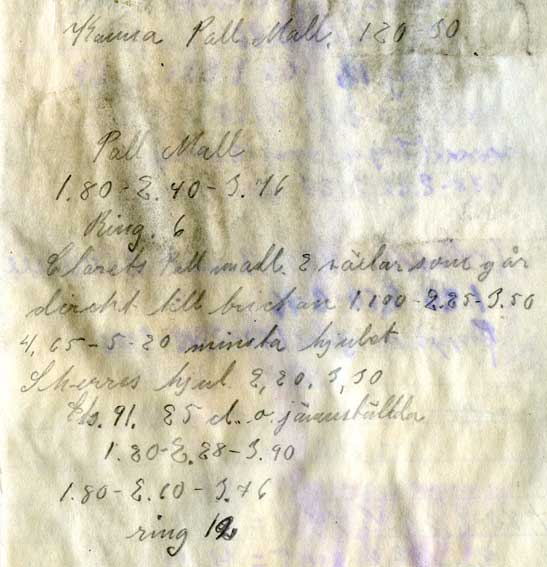An old notebook
found in a box containing pantograph paraphernalia was full of notes and rubbings of etched glasses.Unfortunately, the book had lived in a too humid environmnet for too long: the glue of many of the rubbings had given in, and some of the writing had become blotched.
Some rubbings were in their right places. Beside the glued-in pieces are hand-written notes - some understandable, such as the names of the "sets": Pall Mall, Joel among others.
There are examples of both pantographed and guilloché patterns.
It turned out there were two, similar, notebooks, one "black" and one "white".
Now we (finally!) have managed to digitize both of them:
download "black book" part 1 containing guilloché patterns,
"black book" part 2 containing pantograph patterns and
"white book" containing mostly guilloché patterns.
For the guilloché patterns there are long lists of numbers and dots, "ring nr 12" and other hard-to-understand words and characters.
Our best guess it that these represent "recipes" for obtaining the patterns: which rings, cog wheels etc are to
be mounted in a guilloché machine to get this specific pattern.
These "recipes" are probably written for a gulloché machine like the one we call our "big" one.
We believe that because the numbers for the gears and for the (supposed) cogwheels often tally with the actual gears and cogwheels we
found in a box under the big machine.
The word "ring&quor; is fairly frequent in the recipes, and the big machine has a ring. We only have one ring, and we do
not know how it could be changed.
Read more about our guilloché machines here.
Unfortunately, it doesn't mean we understand where (and how) the gears nad wheels are to be mounted...



